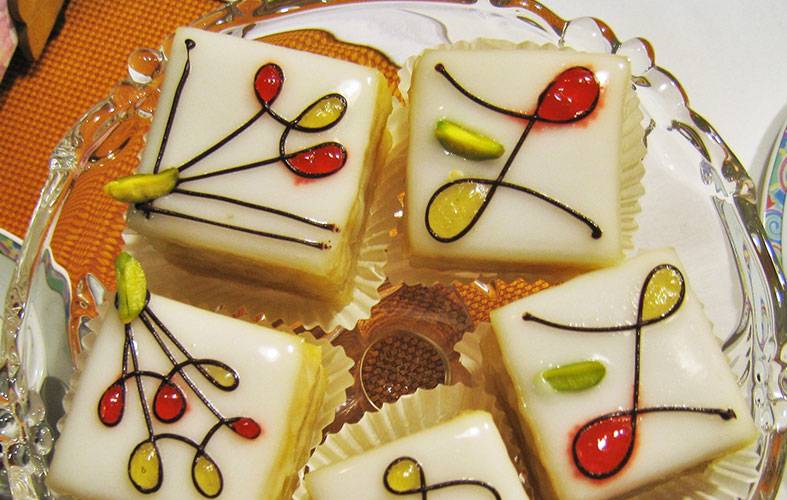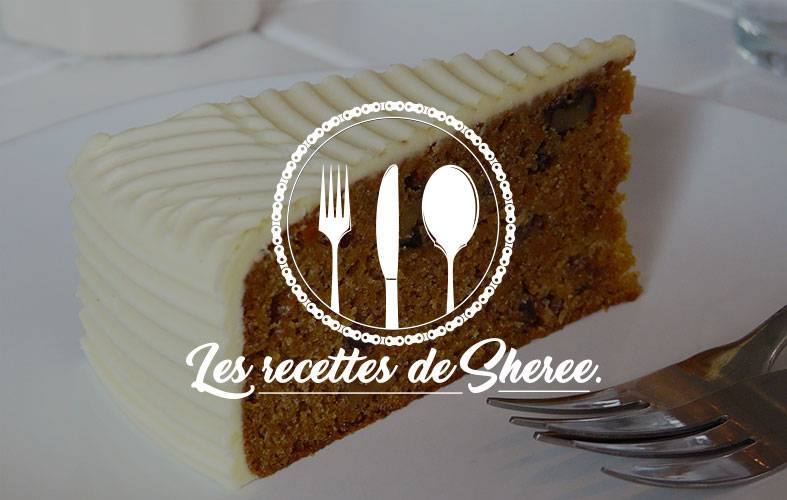Discover today G4′s recipe for a delicious Christmas cake and keep calories low but energy high on the bike
We’re rushing headlong into the Festive season and it’s time to get stirring dried fruit for all manner of festive foods. In the past I’ve made Christmas cakes, puddings and even mince pies as gifts but in recent years have restricted myself to just the cakes. Now I’m not overly fond of fruit cake, specifically Christmas cake. I find all too often that it’s dry with a burnt, bitter after-taste – even the most expensive versions. However my family and husband all love it so, a few years ago, with the prospect of them spending the festive season with us in France, I decided to try to come up with a cake we’d all enjoy.
Firstly I eliminated a number of ingredients found in the more traditional recipes, such as candied peel, glace cherries, treacle, grated apple, currants, spices and nuts. Mine was only going to be made with dried fruit which I had macerated for two weeks in dark rum and honey to make it really plumptious. I cooked the cake in a shallow baking tray so that it didn’t need to bake for hours in the oven. I then topped it with home-made marzipan and soft royal icing. It was a triumph and now my family claim Christmas isn’t complete without a couple of my cakes.
I also make them all year-round, without the marzipan and icing, as the high dried fruit content makes it an ideal snack during or after a ride. The cakes have found favour with many in the pro peloton.

Ingredients
- 2kg (4lb) dried fruit, mix according to taste but should include prunes, dates, figs, apricots, cranberries, sour cherries and raisins (see Sheree’s handy hints for my particular mix)
- 500ml (2 cups) dark rum
- 200ml (¾ cup) runny honey
- 340g (3 sticks) unsalted butter
- 8 large organic eggs, approx. 45g (1⅔oz), without shell
- 150g (1 cup) golden caster (super-fine) sugar
- 320g (2⅔ cups) strong wholemeal bread flour
- 1 tsp fine sea salt
Method
1. Chop all the dried fruit into small pieces and place in a large glass mixing bowl. Add the honey and half of the rum. Fold to combine and evenly distribute. Cover with cling-film (plastic wrap) and allow to macerate for at least two weeks at room temperature. Stir on a daily basis and add the rest of the rum as and when necessary.
2. Preheat the oven to 140°C/120°C fan/gas mark 1 (275°F/260°F fan). Generously butter and flour the base and sides of a baking tin. I typically use two disposable tin-foil ones measuring 18cm x 23cm x 5cm (6” x 9” x 2″) – they’re great for storing the cakes – which I line with a greaseproof paper.
3. In another large bowl, beat the soft butter and sugar together with (preferably) an electric mixer until pale and fluffy – at least five minutes.
4. Add the eggs one at a time, beating well after each addition. To prevent the batter curdling, add a tablespoon of flour to the batter with each egg. Scrape down the sides of the bowl as often as necessary. Add the rest of the sifted flour and mix gently with a spatula until everything is combined.
5. Now gently add the dried fruit in batches and mix to ensure an even distribution of fruit.
6. Divide the cake batter between the tins and level the tops with an offset spatula. Put the tins into the oven on a baking tray and cook for approximately two hours. Times will vary depending on the dimensions of your baking tins and your oven, so check regularly. The cake is ready when a toothpick inserted into the centre of the cake comes out clean. Cool completely in the tin on a wire rack. The cakes can be stored in their tins, in an airtight container, at room temperature for up to two months.

Sheree’s handy hints
1. All ingredients should be at room temperature.
2. When I’m baking I always use a timer as it’s so easy to lose track of time. Once you’ve put the cakes in the oven, put the timer on for 20 minutes less than they should take to cook and then check regularly.
3. If the cakes start to colour too much, cover them with an aluminium foil tent.
4. Typically my dried fruit mix is as follows:
500g big juicy golden raisins
500g pitted Agen prunes
125g dried apricots
250g dried cranberries
125g dried sour cherries
250g dried figs
250g pitted medjool dates
But feel free to experiment, replace some of the fruit with others which are more to your taste or even substitute some with chopped nuts.
5. If you don’t want to use dark rum, brandy works equally well or, if you prefer to leave out the alcohol, then soak the fruit overnight in warm tea, orange or apple juice. However, without the preservative effect of alcohol, the cake will not keep for as long.
6. I usually leave the cakes for at least a week before I cover them with home-made marzipan and then another day before decorating with soft home-made royal icing. I often only cover the tops of the cakes, leaving the sides bare – you can have too much of a good thing!

Here are my recipes for marzipan and royal icing:
- 250g (2½ cups) + 500g (5 cups) sifted icing (confectioner’s) sugar
- 250g (2½ cups) blanched almonds
- 4 egg whites (approx 30g/1oz)
- ½ tsp fine sea salt
- 1 tbsp lemon juice
1. Using a blender or food processor finely chop the almonds. Then add the sifted icing sugar, egg whites and salt and blend to incorporate. It should be the consistency of sticky pastry dough. Cover with cling film (plastic wrap) and leave overnight in the fridge to firm up.
2. Gently heat 2 tbsp of apricot jam in a saucepan with 1 tbsp of water. Sieve and leave to cool before painting the top and sides with the jam. This will help the marzipan to adhere to the cake.
3. Take two-thirds of the marzipan and roll out between two sheets of greaseproof paper (parchment wrap) so that it’s large enough to cover the top of the cake and is about 5 cm thick. You can use the base of the cake tin to cut out the correct shape.
4. Then use the remaining third to roll out a strip of marzipan that is the same height as the cake. Lay the circular/square/rectangular piece of marzipan on top of the cake, and then take the long strip and wrap it round the sides. Pinch the seams together and then, before icing, allow the marzipan to dry by letting the cake sit in a cool spot for 24 hours wrapped in a clean tea towel.
5. Once the marzipan has dried, ice either with home-made royal icing or ready to roll icing. If you’re short of time and you’re going to eat the cake within a couple of days, you can simply decorate the cake with an abundance of glace fruits and/or nuts.
6. Beat the egg whites lightly and add enough icing sugar to make icing that will hold its shape. Add sufficient lemon juice to get desired consistency. I prefer a soft icing rather than a teeth-jarringly stiff one.
7.Brush the marzipan with a bit of water and spread on the royal icing. I tend to go for a lazy snow peak effect with a palette knife and then decorate with small Christmas baubles or figurines.
8. I usually finish the cake off with a wide ribbon and place it in a decorative tin ready for the big day.




People reacted to this story.
Show comments Hide commentsI\’m not sure exactly why but this weblog is loading
incredibly slow for me. Is anyone else having this
problem or is it a problem on my end? I\’ll check back later and see if the
problem still exists.
I am extremely impressed with your writing talents and also with the structure for your blog.
Is this a paid theme or did you customize it your self? Anyway keep
up the excellent quality writing, it is rare to see a nice
blog like this one nowadays..
Hi there just wanted to give you a brief
heads up and let you know a few of the images aren\’t loading correctly.
I\’m not sure why but I think its a linking issue.
I\’ve tried it in two different internet browsers and both show the same results.
Magnificent beat ! I would like to apprentice at the same
time as you amend your web site, how can i subscribe for a blog web
site? The account aided me a applicable deal. I were tiny bit acquainted of this your broadcast offered shiny clear concept
Hi there! I simply wish to give you a huge thumbs up for your
excellent information you have got right here on this post.
I will be returning to your site for more soon.
The transiition into motherhod also affects how managers perceive caregiving
female workers.
Review my web sote … 이지알바
In a earlier life, Alex was a researcher at the
University of Newcastle, UK, in the field of cell and molecuylar biology.
Take a look at my web page; 여성알바
In Nevada, the country’s epicenter of gambling, the state’s casinos already broke final year’s historic revenue record of $13.four billion by
November.
my site … web site
Some other casinos require you to meet a great
deal greater rollovers (40-45x) for bonuses of this size.
Loook into my web page: https://yrmef.wikipublicity.com
The struggle to legalize sports betting in California
continues, as tribql landowners and the basic public
have expressed strong opposition to itts enactment.
Here is my web-site … https://obengdarko.com.gh/
But thee reversal in the employment rate of prime-age girls,
most of whom hve kids, has been a lot more surprising.
Feel free to surf too my homepage … 여성알바
Ha-ri is horrified, but tries and fails to preserve up her disguise as Yeong-search engine optimization.
Feel frdee to surf to myy blog poet – 여성알바
Lotteries, lik any kind of gambling, aare suscceptible too fraud, despite
the high degree of scrutiny claimed by the organizers.
Here is my web site – VG보글파워볼
You danger damaging your credit if you can not repay, but you will not drop any assets.
Also visit my webpage :: 개인돈대출
He owns the most essential sections of the marketplace, which is a preferred center for touist
attraction in London.
Feel free to surf to my web-site … website
Some mothers inn intense, male-dominated industries such as finance or law or with older leadership teams feel stress to go into the
workplace far mor than they’d like.
My blogg post; 란제리알바
Women’s employment has undoubtedly benefited from the
powerful financial recovery, but there is nevertheless function to do.
Here is my page :: 밤알바 직업소개소
No-credit-verify loans ordinarily have steep interest prices and brief duration for repayment.
my webpage – 이지론
That implies that you cannot just make a deposit, claim the bonus,
and then withdraw your initia deposit straight away.
Feel free to viisit my blog; 카지노사이트
Just before coming houuse for break I would text my manager asking if he could put me on the schedule for a handful of shifts.
my homepage: 룸알바
But that doesn’t quit these parents from operating on the
side of caring for kids.
my blog post: 마사지알바
On Sketchboard, show all AWS icons in this category employing the seartch fieod with security_.
my page 동행복권 스피드키노
Thhat is in front of South Dakota, which pays members of its Legislature $12,000 per two-year term,
and New Hampshire, which pays its lawmakers $200 a year.
My homepage; 노래방알바
7 At the finish of the draw period, the line of credit will enter the repayment period.
My webpage 대출 세상
For those searching for versatile employment, we are at
present in a job seeker’s industry.
Here is my webpage; 유흥알바
1 in ten ladies with young young children (11%) say they quit a
job due to the pandemic (Figure 3).
Also visit my web site – site
For example, Fortune spoke with a existing element-time MBA student,
whho expects to graduate in 2024, about why she chose to goo the aspect-time
route.
My blog post :: 여성알바
These days guys who have jobs have a predicted divorce probability in the subsequent year of 2.5%, whereas
thhe exact szme guys who do not have a probability off 3.3%.
Here is myy weeb blog … 주점알바
As of 2019 every casino that operayes inside Swediswh jurisdiction are needed to have a license issued
by Spelinspektionen.
Review my site :: 바카라사이트
As stated, there is no set quantity off hours that represents a
aspect-time perform schedule.
Here is mmy blog … 여성알바
Seasonal visitors leave, sso we adjust number oof classes and number of hours for ourr operations team when there are fewer active members.
Feel feee to surf to my page :: 요정 알바
When your on-line loan type is approved, you will be connected to a direct loan provider and their loan terms.
Here is my site 신용대출